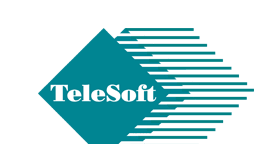PRESS INFORMATION FORIMMEDIATE RELEASEMULTI-LINK FRAME RELAY Software for Embedded ApplicationsAUSTIN Texas -- TeleSoft International --; announces their Multilink Frame Relay (MFR) source code shipping with a broad selection of pre-ported OS interfaces including Linux. MFR is in demand by companies that want to handle increased dataflow on their existing infrastructure. Visit the TeleSoft SUPERCOMM Booth #20612 for more information. MFR provides an industry-standard method to allocate available bandwidth for different users and to aggregate different physical connections into logical bundles. MFR provides many benefits: |
||
|
“Licensing a tested MFR stack will cut 4 to 18 months out of a schedule for MFR development, testing and debug -- depending on the configuration needed” said Charles Summers, VP of Engineering for TeleSoft International. “This helps equipment providers add MFR to their product lines and deliver it faster.” The TeleSoft MFR stack is another addition to TeleSoft’s extensive portfolio of signaling and data protocol stacks for Carrier- and CPE-class products. TsL3 MFR is available under a one-time license fee. Founded in 1992, TeleSoft International is a leader in the development and licensing of ‘Protocols for Developers’ for the communications industry, including DSL, ISDN, PPP, ML-PPP, E1 CAS R2, T1 RBS, X.25 and Multi-link Frame Relay. The company has more than 200 licensees in over 20 countries, including AT&T, IBM, NEC, NTT, Polycom, TelcoBridges, Fujitsu, Lucent Technologies, Cisco and 3Com. |
|







